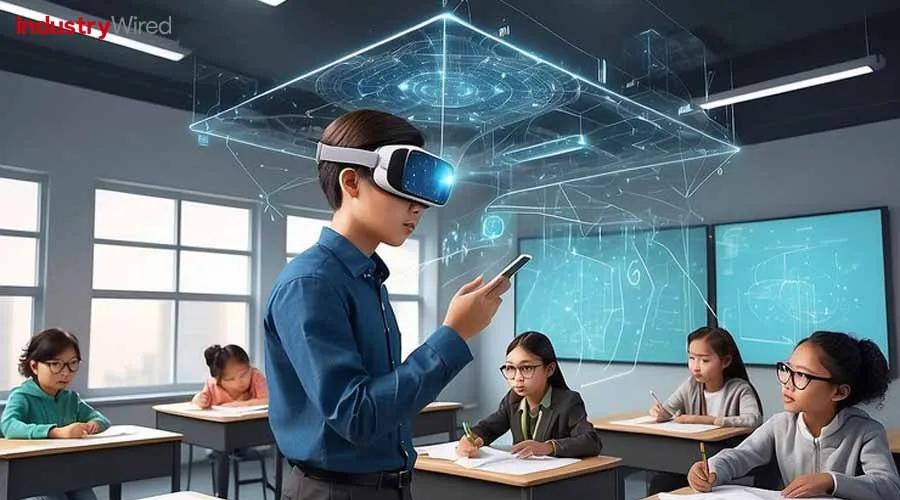Mastering VR/AR in Education: Effective Teacher Training strategies for Immersive Learning Tools
Virtual Reality (VR) and Augmented Reality (AR) technologies are no longer futuristic concepts—they’re rapidly transforming the educational landscape. As immersive learning tools become increasingly commonplace, the challenge shifts from access to effective integration. For schools eager to leverage these innovations, well-structured teacher training is the cornerstone of successful adoption. In this article, we’ll explore practical strategies, benefits, real-world examples, and tips for mastering VR/AR in education, ensuring teachers and students reap the full rewards of immersive technology.
Why Invest in VR/AR teacher Training?
The adoption of VR/AR in education presents a unique chance to engage students, promote experiential learning, and boost academic performance. Though, without trained educators, these benefits frequently enough remain out of reach. Here’s why immersive learning tools require specialized teacher development:
- Maximized Learning Outcomes: Trained teachers can better connect curricular goals with VR/AR content, aligning immersive experiences with standards.
- Increased Confidence: Familiarity with VR/AR reduces apprehension, encouraging teachers to experiment and innovate in their teaching.
- Richer student Engagement: Instructors who master these tools can create captivating, interactive lessons that resonate with diverse learners.
- Safety and Digital Citizenship: Proper training helps teachers establish safe guidelines and responsible use practices for students engaging with immersive environments.
Core strategies for Effective VR/AR Teacher Training
Developing a comprehensive professional development plan for immersive learning hinges on several key approaches. Below are proven strategies that schools and districts can implement:
1. Scaffold Training with Clear Roadmaps
- Initial Orientation: Introduce basic hardware operation, health and safety guidelines, and intuitive navigation within VR/AR environments.
- Pedagogical Integration: Showcase real-world classroom applications and lesson design best practices for immersive learning tools.
- Advanced workshops: Dive deeper into content creation, facilitating collaborative learning, and troubleshooting technical challenges.
2. Blend In-person and Online Learning
Combining hands-on workshops with self-paced video modules allows teachers to learn at their own speed, revisit challenging concepts, and collaborate with peers both on and offline.
3. Leverage peer Mentoring and Professional Learning Communities (PLCs)
- create a network of early adopters or VR/AR ambassadors within yoru school to provide ongoing support.
- Encourage sharing of classroom success stories, lesson plans, and troubleshooting tips through regular PLC meetings or digital forums.
4. Prioritize Content Relevance
Ensure that VR/AR resources align directly with instructors’ subject areas and grade levels. Subject-specific training helps teachers immediately envision how to use immersive learning tools effectively.
5. Continuous Assessment and feedback Loops
- Provide regular opportunities for teachers to reflect, share feedback, and shape ongoing training content.
- Offer micro-credentials or certificates to recognize milestones and incentivize continued engagement with VR/AR tools.
Key Benefits of VR/AR Teacher Training
Investing in specialized VR/AR professional development delivers substantial rewards for educational institutions:
- Active, Personalized Learning: teachers can adapt immersive experiences to individual student needs, enabling differentiated instruction like never before.
- Expanded Subject Exploration: VR/AR lets teachers take students on virtual field trips, simulate science experiments, or visualize complex math concepts, making abstract topics concrete and accessible.
- Immediate feedback and Assessment: Immersive tools provide instant analytics on student performance, helping teachers adjust instruction dynamically.
- Inclusivity and Accessibility: Proper training ensures all students, including those with disabilities, benefit from supportive features and accessible content in VR/AR platforms.
- Enhanced Technology Integration: Teachers who master immersive tools become tech leaders, influencing broader technology adoption across curricula.
Real-World case Studies: VR/AR in Action
Case Study 1: Virtual Science Laboratories in High Schools
A district in California implemented VR chemistry labs, giving students hands-on experience with experiments usually limited by safety or budget constraints. Teachers received targeted training on safety protocols and simulation controls, resulting in a 40% increase in student engagement and higher assessment scores during lab units.
Case Study 2: AR-Assisted Language Learning
A language magnet school integrated AR apps that overlay translations and visual cues onto real-world objects. staff attended iterative workshops to master the app and incorporate its features into lessons. Within a semester,students’ vocabulary retention improved by 25%,as measured by formative assessments.
Case Study 3: Cross-Curricular History Immersion
In the UK,a secondary school piloted past reenactments using VR headsets. Teachers collaborated during regular PLC sessions to design immersive storytelling experiences aligned with history standards. Observed outcomes included more engaging classroom discussions and improved historical empathy among students.
Practical Tips for Seamless Teacher Training in VR/AR
- Start Small: Pilot VR/AR with voluntary teachers and a limited number of lessons before scaling up.
- Embrace microlearning: Break training into manageable, focused sessions to prevent overwhelm and boost retention.
- Encourage Experimentation: Foster a growth mindset by allowing teachers to “play” and learn through trial and error.
- provide Ongoing Technical Support: Designate tech-savvy staff or external experts as points of contact for troubleshooting and updates.
- gather Student Feedback: Involve students in evaluating the impact of VR/AR lessons to refine instructional approaches continuously.
First-Hand Experiences: Insights from the Classroom
“When I first tried VR in my classroom, it was a little intimidating. But after collaborative workshops and peer demos, I saw my students’ excitement grow. Now, I feel empowered to use these tools, and my lessons have never been more interactive.”
— sarah T., Middle School Science Teacher
“The AR resources made vocabulary lessons more accessible for my English language learners. With the right training, even my least tech-confident colleagues became advocates for immersive tech.”
— Michael K., Primary Teacher
Conclusion: Setting the Stage for Immersive Learning Success
Mastering VR/AR in education starts with empowering teachers. Through intentional and sustained investment in training, educators gain the confidence and creativity to unlock the full potential of immersive learning tools. As these technologies become further embedded in our classrooms, proactive teacher development will remain the catalyst for equitable, engaging, and innovative education. For forward-thinking schools, the future of learning is not just about adopting VR/AR—itS about equipping teachers to harness these platforms to transform teaching and inspire learners for years to come.

